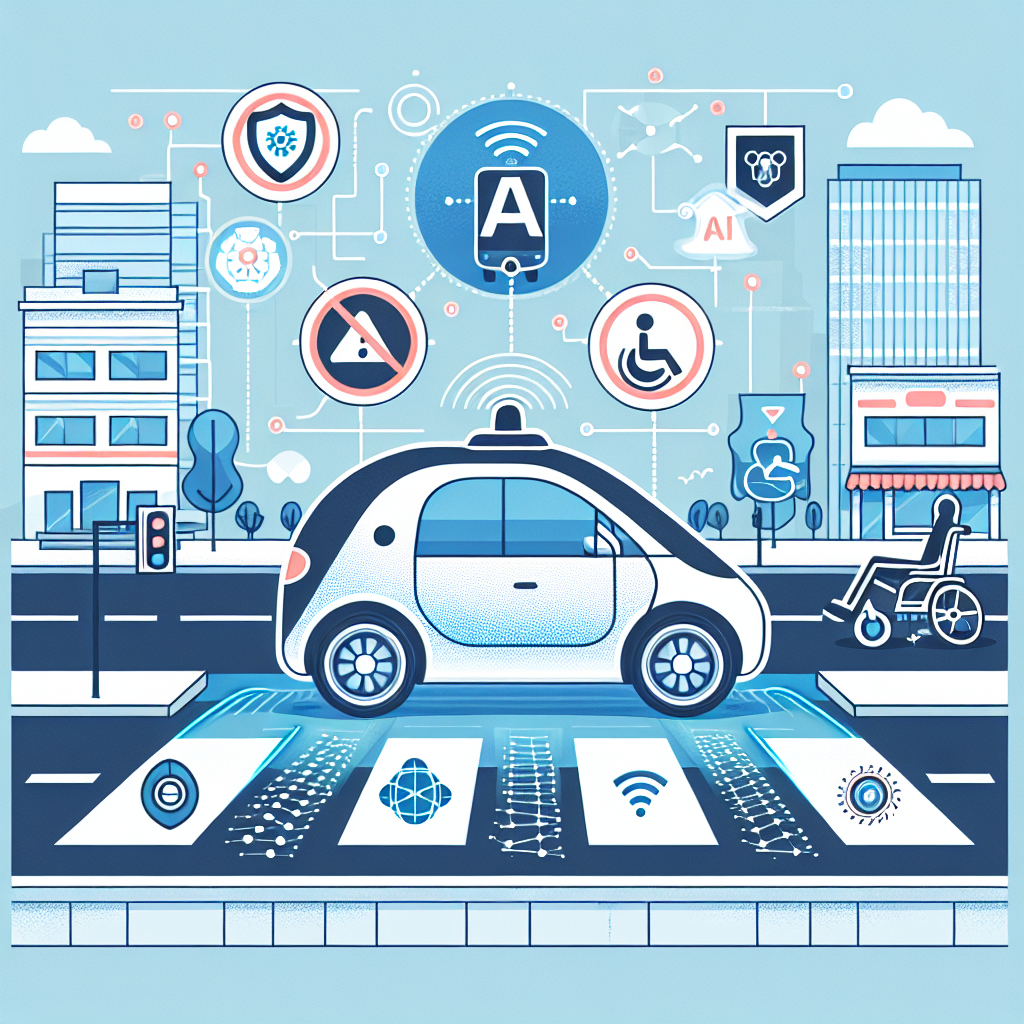Artificial intelligence (AI) has rapidly transformed various industries, and the transportation sector is no exception. From self-driving cars to traffic management systems, AI is revolutionizing how we move people and goods from one place to another. However, with this advancement comes a host of ethical considerations that must be addressed to ensure the safety and accessibility of AI in transportation.
Ethical AI in transportation refers to the development and deployment of AI technologies in a way that prioritizes safety, fairness, and accessibility for all users. This involves considering the potential risks and benefits of AI applications in transportation, as well as the societal implications of their use. In this article, we will explore the key ethical considerations surrounding AI in transportation and discuss how stakeholders can work together to ensure the safe and equitable deployment of these technologies.
Safety
One of the primary concerns surrounding AI in transportation is safety. Self-driving cars, for example, have the potential to reduce accidents caused by human error, which is responsible for the majority of traffic accidents. However, there are still significant challenges to overcome before autonomous vehicles can be deployed safely on a large scale.
One of the main ethical dilemmas in this regard is the issue of accountability. Who is responsible when an AI system causes an accident? Is it the manufacturer of the technology, the operator of the vehicle, or the regulator who approved its use? These are complex questions that require careful consideration to ensure that safety remains a top priority in the development and deployment of AI in transportation.
Another safety concern is the potential for AI systems to be hacked or manipulated. As transportation systems become increasingly connected and reliant on AI, they also become more vulnerable to cyber attacks. This could have serious consequences, such as hackers taking control of autonomous vehicles or disrupting traffic management systems. Ensuring the security of AI technologies in transportation is therefore essential to prevent such risks from occurring.
Fairness
In addition to safety, fairness is another key ethical consideration in the deployment of AI in transportation. AI systems have the potential to exacerbate existing inequalities if they are not designed and implemented in a way that promotes fairness and equity for all users.
For example, there is a risk that AI algorithms used in transportation systems could perpetuate bias and discrimination. If these algorithms are trained on biased data or programmed with discriminatory criteria, they could unfairly disadvantage certain groups of people, such as minorities or low-income individuals. This could result in unequal access to transportation services or opportunities for mobility, further widening existing disparities in society.
To address this challenge, it is essential for developers and policymakers to prioritize fairness and equity in the design and deployment of AI technologies in transportation. This includes ensuring that AI algorithms are transparent, accountable, and regularly audited to detect and correct bias. It also involves actively involving diverse stakeholders in the decision-making process to ensure that the needs and perspectives of all users are taken into account.
Accessibility
Finally, accessibility is another critical ethical consideration in the development of AI in transportation. The goal of transportation systems should be to provide safe and convenient access to mobility for all individuals, regardless of their abilities, income, or location. AI technologies have the potential to significantly improve accessibility by enhancing the efficiency and reliability of transportation services.
For example, self-driving cars could provide a new form of mobility for individuals with disabilities who are unable to drive themselves. AI-powered traffic management systems could reduce congestion and improve the efficiency of public transportation, making it easier for people to access essential services and opportunities. However, it is important to ensure that these technologies are designed with accessibility in mind from the outset to ensure that they benefit all users.
FAQs
Q: What are some examples of AI technologies in transportation?
A: Some examples of AI technologies in transportation include self-driving cars, traffic management systems, ride-sharing apps, predictive maintenance systems for vehicles, and route optimization algorithms.
Q: How can AI improve safety in transportation?
A: AI can improve safety in transportation by reducing accidents caused by human error, optimizing traffic flow to prevent congestion, and enhancing the efficiency of transportation services to reduce the risk of accidents and delays.
Q: How can AI promote fairness in transportation?
A: AI can promote fairness in transportation by ensuring that algorithms are transparent, accountable, and regularly audited to detect and correct bias. It also involves actively involving diverse stakeholders in the decision-making process to ensure that the needs and perspectives of all users are taken into account.
Q: How can AI enhance accessibility in transportation?
A: AI can enhance accessibility in transportation by providing new forms of mobility for individuals with disabilities, improving the efficiency and reliability of transportation services, and ensuring that technologies are designed with accessibility in mind from the outset.
In conclusion, ethical AI in transportation is essential to ensure the safety and accessibility of AI technologies in transportation. By prioritizing safety, fairness, and accessibility in the development and deployment of AI systems, stakeholders can work together to address the complex ethical challenges that arise from the use of AI in transportation. By doing so, we can harness the potential of AI to revolutionize transportation while ensuring that it benefits all users and promotes a more equitable and sustainable future.

